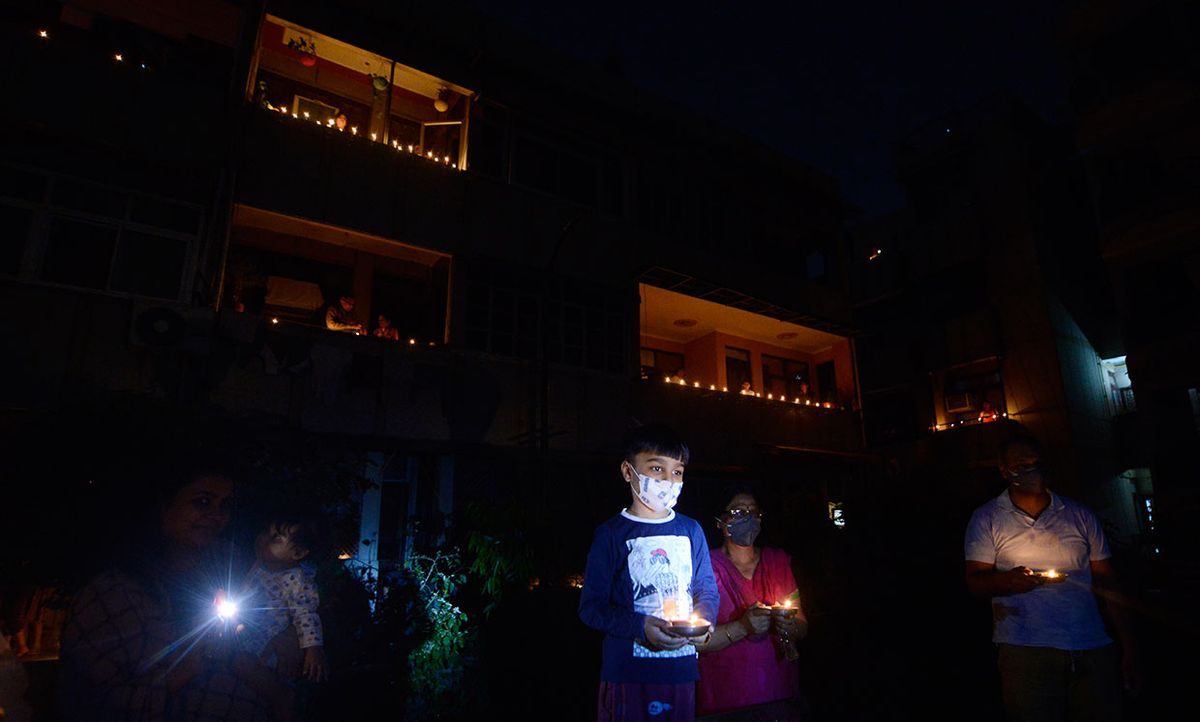Earlier this month, Indian Prime Minister Narendra Modi asked the entire country to simultaneously switch off the lights. The gesture was meant to be a show of solidarity during the coronavirus pandemic, but Modi’s request left power engineers scrambling to prevent a nationwide blackout.
In a televised address on the afternoon of Friday, 3 April, Modi called on Indians to switch off their lights for nine minutes beginning at 9PM on Sunday, 5 April. Within hours, experts raised concerns that the massive drop in electricity demand, followed by a sudden surge nine minutes later, could debilitate the grid and trigger widespread blackouts.
Despite the warnings, the government stood by its request. So India’s power sector had just two days to come up with a strategy to protect the grid. “It was a very challenging situation,” says Sushil Kumar Soonee, a former CEO of grid operator Power System Operation Corporation (POSOCO) who still advises the organization and was involved in planning the response. (India’s Ministry of Power didn’t respond to a request for comment.)
Too much or too little power in the grid can damage equipment. Protective relay systems shut down power lines and power stations if values stray outside of acceptable ranges. That means operators must maintain a delicate balance between the amount of power generated and the amount used. Sudden drops in demand or supply can quickly cause cascading failures.
India has faced major threats to the grid before—most notably, a blackout in July 2012 that saw more than 620 million people lose power. But most such problems were due to generation failing to match demand. Accommodating a sudden and massive drop in demand was uncharted territory, says Padamjit Singh, a retired grid operator for the electricity board of the northern state of Punjab. “Historically, it has never arisen,” says Singh. “The nature of your planning is 180 degrees opposite.”

Back at POSOCO, engineers had to quickly estimate how big the drop in demand could be and devise a strategy to mitigate it. This was complicated by rumors spreading on social media that the event could cause a power surge that would destroy appliances, which lead to fears that citizens would disconnect more than just their lights.
POSOCO’s solution was to gradually reduce the power generated by thermal power stations to close to the minimum before the event and rely on India’s 45 GW of hydropower, which accounts for roughly 10 percent of the country’s electricity generation, to manage the fluctuations in demand. While most thermal power stations take hours to ramp up, increasing and decreasing hydropower generation is quite literally like turning a tap on or off, says Ashok Rao, a retired electrical engineer and patron of the All India Federation of Power Engineers.
Hydropower stations were ramped up to full capacity before the event to make up for the reduced generation from thermal plants, and then dropped rapidly to less than 10 percent of [their generation capacity] as people started switching their lights off. At the end of the nine minutes, they were ramped back up to cope with surging demand. Just before the event, hydropower stations also started pumping water up into dams to provide extra load on the grid until the end of the nine minutes.
It wasn’t just grid operators who had to spring into action. Electrical engineer Ankit Manna says a blackout could have been disastrous for the Vedanta steel plant he works at in Jharkhand state. A sudden loss of power would have knocked out the facility’s oxygen plant. If that happened, it would take 10 hours to bring it back online, costing millions of dollars in lost production. Even worse, if a blackout caused the facility’s coke oven to trip, it could have caused significant damage to the production line that could have potentially required months of repairs.
“It would have been a huge problem,” he says. So he and colleagues devised a plan to decrease production by nearly 50 percent so it could be powered entirely by the facility’s 60-MW on-site power plant and be completely cut off from the grid, a process known as “islanding.”
In the end, nationwide electricity demand dipped by 31 GW during the exercise—more than double what POSOCO had predicted. But, Soonee says, due to the difficulty inherent in accurately predicting the behavior of 1.3 billion people, they had built wide margins of error into their projections and planned accordingly. Fortunately, the many moving parts of India’s enormous grid also worked together smoothly, he adds.
While the event garnered headlines, Soonee says the grid actually faces far more significant technical and financial challenges from the sustained 30 percent reduction in power demand that has resulted from shuttering much of India’s economy during the ongoing nationwide lockdown. “This was a small battle,” he says. “We have a long war before us.”
Edd Gent is a freelance science and technology writer based in Bengaluru, India. His writing focuses on emerging technologies across computing, engineering, energy and bioscience. He's on Twitter at @EddytheGent and email at edd dot gent at outlook dot com. His PGP fingerprint is ABB8 6BB3 3E69 C4A7 EC91 611B 5C12 193D 5DFC C01B. His public key is here. DM for Signal info.



